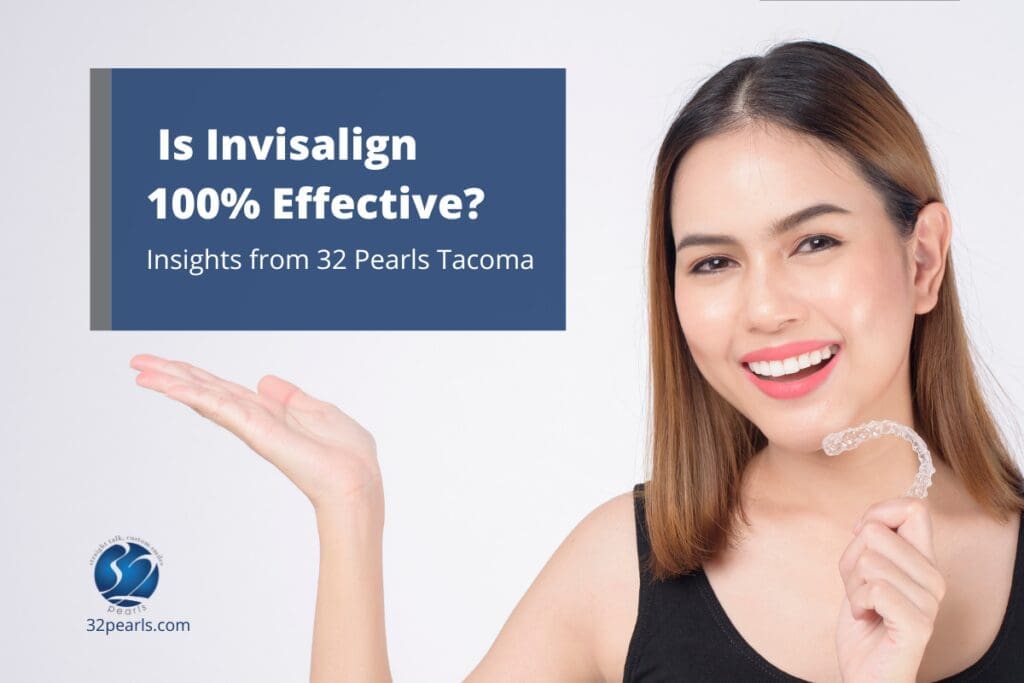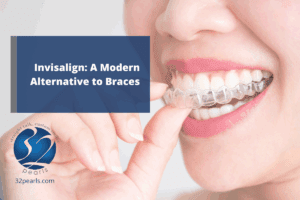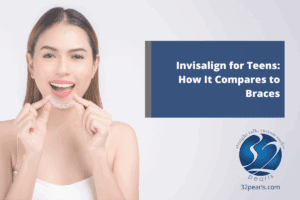Insights from 32 Pearls Tacoma

Table of Contents
Introduction to Invisalign
The Modern Approach to Teeth Alignment
Invisalign is an innovative orthodontic treatment that offers a discreet and convenient solution for teeth straightening. Unlike traditional metal braces, Invisalign uses clear custom-fitted plastic aligners to move your teeth towards the desired position gradually. You will receive a series of these aligners, each slightly different from the previous one. What sets Invisalign apart is its aesthetic appearance and the flexibility it provides. You can easily remove the aligners for eating, brushing, and flossing, which promotes better oral hygiene during the treatment. Additionally, you’ll spend less time in the dentist’s office for adjustments since there are no wires or brackets.
Understanding How Invisalign Works
The Science Behind Clear Aligners

Invisalign technology relies on a series of custom-made, clear aligners. These aligners are crafted from a flexible thermoplastic material named SmartTrack®, uniquely designed for Invisalign treatment. When you wear these aligners, they apply consistent, controlled force to your teeth. Here’s the process that unfolds:
- Consultation: Your dentist or dentist assesses your teeth and determines if Invisalign is suitable for you.
- Custom Plan: Using 3D computer imaging technology, a precise treatment plan is developed, showing the gradual movement of your teeth with each set of aligners.
- Fabrication: Your aligners are custom-made to fit snugly over your teeth and are virtually invisible.
- Wear Schedule: You’ll wear each aligner for about 1-2 weeks, removing them only to eat, drink, brush, and floss.
- Progressive Alignment: As you progress through the series of aligners, your teeth will slowly move toward their final position.
- Check-ins: Periodic check-ups with your dentist ensure your treatment progresses as planned.
The effectiveness of Invisalign aligners largely depends on your commitment to wearing them as recommended.
Measuring Invisalign Effectiveness
What Clinical Studies Show
Clinical studies are pivotal in establishing the effectiveness of Invisalign. Research indicates the following:
- Invisalign can successfully address various orthodontic issues, ranging from mild to moderate. However, severe cases may require additional orthodontic treatments.
- Overall treatment time with Invisalign is comparable to that of traditional braces, though this can vary based on individual compliance and the case’s complexity.
- Patient adherence to wearing the aligners for the prescribed 22 hours daily is essential for optimal results.
- The technology fabricating the aligners continues improving, leading to better outcomes.
Remember, while effectiveness is generally high, individual results can vary based on multiple factors.
Factors That Impact Invisalign’s Effectiveness
- Orthodontic Condition Severity: Mild to moderate misalignments respond best; severe issues may need alternative treatments.
- Patient Compliance: Wear your aligners for the prescribed 20-22 hours daily to ensure optimal results.
- Age and Developmental Stage: Younger patients with still-developing jaws may experience quicker adjustments.
- Biological Response: Individual variation in tooth movement responsiveness can affect treatment duration and success.
- Lifestyle and Habits: Tobacco use and poor oral hygiene can impede progress; avoid chewing gums and eating with aligners.
- Dental Visits Consistency: Regular check-ups at 32 Pearls Tacoma allow timely adjustments and progress monitoring.
Comparing Invisalign to Traditional Braces
Effectiveness and Comfort
If you’re thinking about getting orthodontic treatment, it’s important to consider all your options. Have you considered Invisalign? The aligners are practically invisible and can be removed for easy cleaning and eating. They’re a great choice for those who want a discreet treatment option. On the other hand, traditional metal braces have their benefits too. While they may be more noticeable, they provide a continuous alignment that can help you achieve the perfect smile. Ultimately, the choice is yours and we’re here to help you make an informed decision.
- Effectiveness: Invisalign can be highly effective, especially for mild to moderate dental misalignments. Traditional braces, however, could be more suitable for complex and severe cases.
- Comfort: Invisalign aligners are custom-fitted and typically considered more comfortable than braces, which may irritate cheeks and gums.
- Convenience: The removability of Invisalign offers dietary freedom and simplifies oral care, unlike braces.
- Visibility: Invisalign’s clear design offers an aesthetic advantage, making them less noticeable than metal braces.
Ultimately, the effectiveness of either treatment depends on individual cases and adherence to your dentist’s instructions.
Realistic Expectations
Can Invisalign Guarantee 100% Success?
While Invisalign is a highly effective for straightening teeth, no orthodontic treatment can promise absolute perfection. Success largely depends on your specific dental issues, how well you follow the treatment plan and your body’s response. You must:
- Wear your aligners for the recommended 20-22 hours daily.
- Follow your dentist’s instructions for care and maintenance.
- Attend regular check-ups to monitor progress.
Understanding that individual results may vary helps set realistic expectations for your Invisalign journey.
Addressing Complex Dental Issues
Invisalign’s Limitations
Invisalign aligners offer a discreet way to straighten teeth, but they have limitations when addressing complex dental issues. Consider the following:
- Severe malocclusion: Invisalign may not be suitable for correcting a significant overbite, underbite, or crossbite issues.
- Tooth shape and position: Teeth with short crowns or those that are round, pegged, or severely rotated may not respond well to aligners.
- Large gaps: Invisalign can manage mild to moderate gaps, but gaps larger than 6mm might require alternative treatments.
- Intrusion and extrusion: Moving teeth vertically is more challenging with Invisalign, potentially necessitating braces.
- Need for significant movement: Invisalign may not effectively move teeth long distances for optimal alignment.
It’s important to consult with your 32 Pearls Tacoma dentist, who can assess if Invisalign is the right solution for your dental needs.
Maximizing Treatment Success
Tips and Best Practices from 32 Pearls Tacoma
To enhance your Invisalign experience and outcomes, consider these expert recommendations:
- Adhere to Wear Schedule: Commit to wearing your aligners for the prescribed 22 hours daily.
- Maintain Oral Hygiene: Regularly brush and floss to keep your aligners and teeth healthy.
- Attend Follow-Ups: Keep your scheduled appointments for adjustments and progress evaluation.
- Use Retainers: Wear retainers as directed to maintain your new smile after treatment.
- Follow Care Instructions: Clean your aligners as advised, avoiding hot water that could warp them.
The Role of Patient Compliance in Invisalign Effectiveness
Your compliance with treatment protocols is essential for Invisalign to be effective. Critical aspects include:
- Wearing Aligners Consistently: Invisalign aligners should be worn for 20 to 22 hours daily. Removing them only for eating, drinking non-clear liquids, and oral hygiene is essential.
- Routine Aligner Switch: Progressing through the aligner series as directed enables the teeth to move correctly.
- Attending Follow-up Appointments: Regular check-ups allow for adjustments and monitoring progress.
- Maintaining Oral Hygiene: Proper cleaning of both teeth and aligners prevents complications that could impede treatment.
- Adhering to Dietary Guidelines: Avoiding certain foods can prevent damage to aligners.
Your commitment directly impacts the effectiveness and timeline of your Invisalign treatment.
Long-Term Results
Understanding Retention After Invisalign
When considering Invisalign for straightening your teeth, it’s understandable that you may be focused on the immediate transformation of your smile. However, it’s important to remember that the results of your treatment will be long-lasting only if you take care of them. After your Invisalign treatment concludes, it’s vital to wear your retainer as your dentist prescribes. This will help maintain the alignment achieved through Invisalign. Your teeth tend to move back to their original positions over time, so wearing a retainer at the recommended intervals is crucial to prevent this from happening. Your commitment to wearing your retainer properly will be essential in preserving the straight smile you worked hard to achieve.
Making an Informed Decision About Invisalign Treatment
We’re excited to help you explore the benefits of Invisalign! Everyone’s dental needs, lifestyle, and goals are unique, so it’s important to evaluate if Invisalign is the right choice for you. Our team at 32 Pearls Tacoma is well-versed in Invisalign and can provide personalized insights based on our extensive experience. We’re confident that with our guidance, you’ll make an informed decision that aligns with your expectations and yields the best possible outcomes for your smile. Let’s work together to achieve your dream smile with Invisalign!
FAQ's
Invisalign can be highly effective for mild to moderate dental misalignments. However, it’s important to understand that no orthodontic treatment can guarantee absolute perfection. Success depends on various factors, including the severity of your dental issues, adherence to the treatment plan, and individual body response. While effectiveness is generally high, individual results may vary.
Several factors can influence the effectiveness of Invisalign treatment, including the severity of your orthodontic condition, your compliance with wearing the aligners as prescribed (20-22 hours daily), age and developmental stage (younger patients may experience quicker adjustments), biological response to tooth movement, lifestyle habits (such as tobacco use and oral hygiene), consistency in dental visits for check-ups and adjustments, and the expertise of your dental provider.
Both Invisalign and traditional braces can be effective in straightening teeth. Invisalign is often preferred for its discreet appearance, removability, and comfort. It’s highly effective for mild to moderate misalignments. Traditional braces, on the other hand, may be more suitable for complex and severe cases where continuous alignment is needed. The choice between the two depends on individual preferences and the recommendation of your dentist.





